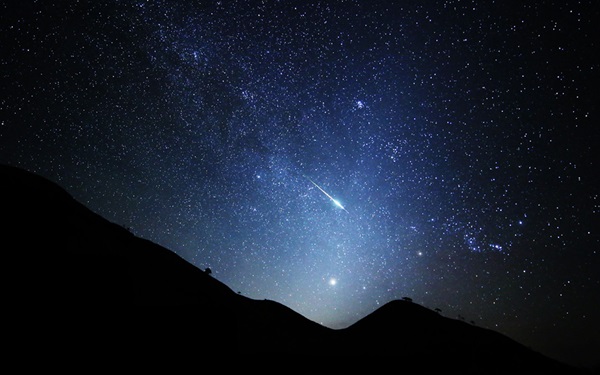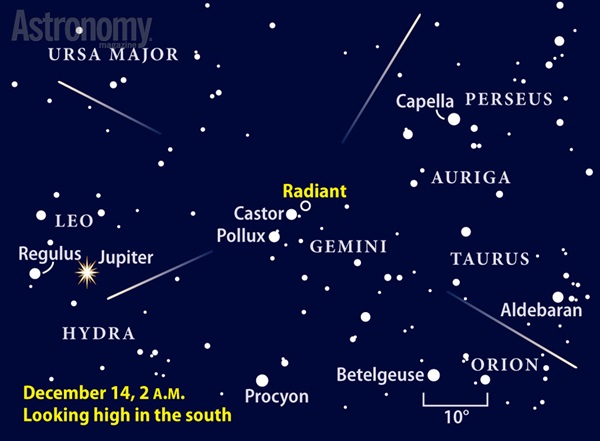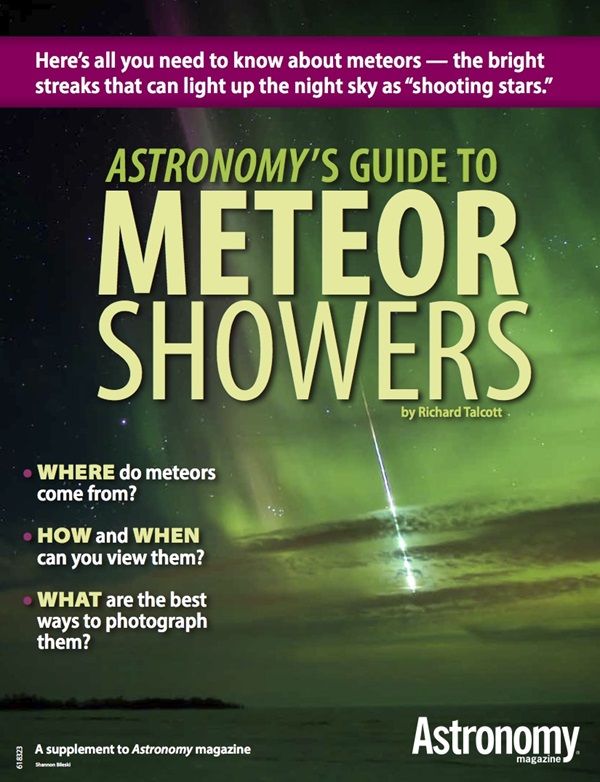Key Takeaways:
And 2015 promises one more significant advantage: The shower peaks on the night of August 12/13, just one day before New Moon. With the Moon absent from the sky, observers under clear, dark skies can expect to see up to 100 “shooting stars” per hour, the maximum rate possible. Conditions haven’t been this good since 2010.
Senior Editor Michael Bakich of Astronomy magazine loves watching meteor showers, particularly spectacular ones like the Perseids. “It has to be one of the easiest, most relaxing forms of entertainment available to backyard skygazers,” he says. “There’s no need for a telescope because optical aid narrows your field of view, and you want to take in as much sky as possible. And best of all, you can observe the spectacle while lying down. Who could ask for more?”
Although nature delivers the Perseids on a silver platter this year, that doesn’t mean you can just walk out the door and see a great show. First, to maximize the number of meteors visible, observe from a rural location without any nearby artificial lights. Battling city sky glow or a neighbor’s security light can wash out fainter meteors just as effectively as a bright Moon would. And the middle of a large field or a hilltop provides a panoramic view that will let you spy more meteors.
Second, start viewing the shower after midnight, and keep watching until morning twilight begins. The after-midnight hours deliver more meteors because an observer then lies on the side of Earth facing forward in our planet’s orbit around the Sun. (It’s the same reason why a snowstorm looks much worse out of a moving car’s front windshield.)
The radiant — the point from which the meteors appear to originate — also climbs higher in the sky as dawn approaches. The Perseid radiant lies on the border between Cassiopeia and Perseus, with the latter constellation giving its name to the shower. All other things being equal, the higher the radiant, the more meteors you will see. For the best views of this shower, look about two-thirds of the way up from the horizon toward the northeast. But don’t get tunnel vision staring at one location. Let your eyes wander so your peripheral vision can pick up meteors you otherwise might not see.
If the weather forecast looks less than ideal for August 12/13, consider viewing the night before or after. Although you likely will see only about a third as many meteors as you would on the peak night, 30 meteors per hour is much better than zero.
SPECIAL OFFER: Subscribe to Astronomy magazine and get your FREE copy of Astronomy‘s Guide to Meteor Showers, a must-have for all Perseid fans!
Learn more »
- The dust particles that create Perseid meteors were born in the comet known as 109P/Swift-Tuttle. This object orbits the Sun once every 130 years; it last returned to the inner solar system in 1992.
- The dust specks hit Earth’s atmosphere at 37 miles per second (59 km/s), vaporizing from friction with the air and leaving behind the streaks of light we call meteors.
- Although 37 miles per second may seem fast, Perseid meteors are not the quickest among annual showers. The Leonids of November top the charts, hitting our atmosphere at 44 miles per second (71 km/s).
- Although most shower meteors meet their demise high in Earth’s atmosphere, at altitudes between 50 and 70 miles (85 and 115 kilometers), a few bigger particles survive to within 12 miles (20km) of the surface. These typically produce “fireballs” that glow as bright as or brighter than Venus.
- Video: How to observe meteor showers, with Michael E. Bakich, senior editor
- Video: Easy-to-Find Objects in the 2015 Summer Sky, with Richard Talcott, senior editor
- StarDome: Locate the shower’s radiant in Perseus in your night sky with our interactive star chart.
- The Sky this Week: Get your meteor shower info from a daily digest of celestial events coming soon to a sky near you.
- Sign up for our free weekly email newsletter.














